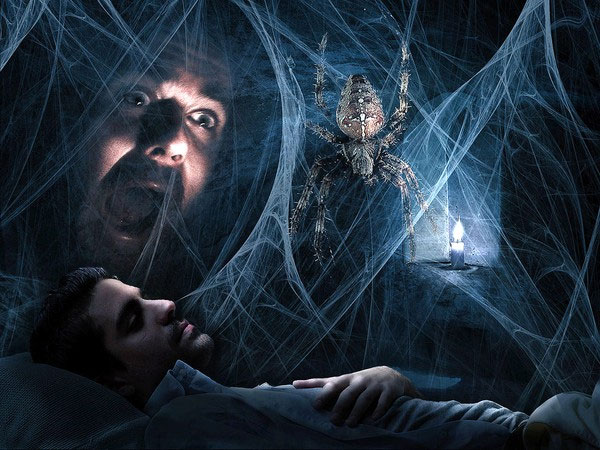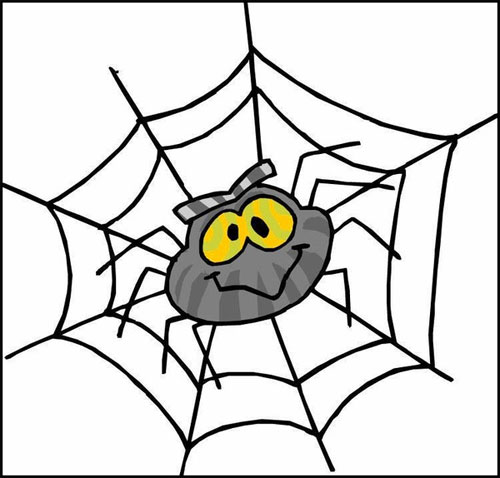According to statistics from Anxiety UK, arachnophobia is one of the 10 most common phobias that people suffer from.
>>> Arachnophobia may be hereditary
Arachnophobia is the fear of arachnids (a class of arthropods) – a group of animals that includes spiders, scorpions, and ticks. The term is derived from the Greek word arachne, meaning spider, and phobos, meaning fear. For some individuals, this phobia can be debilitating.
The American Psychological Association reports that more than 10 million people in the United States suffer from some form of phobia, with 40% of these phobias related to frightening creatures such as insects, snakes, and of course, spiders.
So why do some people develop a deep fear of spiders and their relatives?

For many years, experts have been researching the causes of this phobia, and it seems they have found an answer. The consensus is that a person fears spiders simply because their primitive ancestors feared spiders.
Experts argue that millions of years ago, human ancestors had to overcome many threats to survive and thrive.
One of these threats included creatures like venomous spiders, scorpions, and snakes. Some managed to survive these dangers, but others lost their lives to the bites of venomous spiders.

Giant venomous spiders once haunted our ancestors.
Thus, the fear of spiders formed in our ancestors as a survival response in nature. Over the course of evolution, these dangers disappeared at a faster rate than the evolution of humans.
Therefore, this fear has been passed down through generations to the present day, causing some people to panic at the mere sight of a spider.

Cute spider images can also make many people sweat.
A 2016 study published in the journal Biological Psychology found that individuals with arachnophobia often perceive spiders they see and interact with as larger than they actually are. Tali Leibovich, the study’s author and a scientist at Ben Gurion University in New York, stated: “This research reveals that emotions can influence fundamental perceptions such as size and demonstrate how each of us experiences the world in a unique and different way.”
So what exactly about spiders triggers such a negative reaction? It all stems from “feelings of disgust”, according to Psychology Today. Some attribute it to the hairs of tarantulas, others to their venom, and some find their erratic movements unsettling. All of this suggests that rather than fear, what people actually feel may be disgust.

Indeed, people feel disgust when they see spiders.
Phobias can trigger a range of physical reactions, including nausea, rapid heartbeat, and dilated pupils. Other reactions when seeing these creatures include wrinkling the nose (thought to help block foul smells and pathogens) and frowning.
Researchers have employed various methods to help patients overcome their fear of spiders.
Exposure therapy is often hailed as the most successful treatment for this condition. In this therapy, patients with phobias are exposed to what they fear – in this case, spiders – in a safe and controlled environment. The aim is for patients to “reprogram” their brains and create a “new safe memory in the brain alongside the bad memories.”

Exposure therapy is commonly used to treat arachnophobia.
In 2014, scientists reported that a man was cured of his arachnophobia after doctors removed a part of his brain. The doctors took a piece of tissue from the left amygdala of the man to alleviate seizures caused by sarcoidosis. After the surgery, his fear of spiders vanished, and he became fascinated with these eight-legged creatures.
A 2016 study published in Biological Psychiatry reported that patients who were once afraid of spiders were able to touch tarantulas after a few days of taking propranolol while being exposed to tarantulas for two minutes at a time. By the end of three months, patients were able to hold tarantulas. After a year, the study reported that their fear had nearly disappeared.

The “Spider-Man” movie has helped lessen the impact of arachnophobia.
For some, the movie “Spider-Man” has helped reduce the impact of arachnophobia. In 2019, a study published in the journal Frontiers in Psychiatry reported that watching clips of Spider-Man or Ant-Man helped people alleviate symptoms of this condition. The group of scientists asked participants to complete a survey about their fears before and after watching a clip from Marvel’s Spider-Man. Participants reported fewer symptoms after watching just a seven-second clip from the film.
Technology is becoming increasingly important as a treatment method for arachnophobia. As virtual reality becomes more popular, scientists are exploring ways to alleviate and even cure the effects of arachnophobia by tapping into the virtual world.


















































